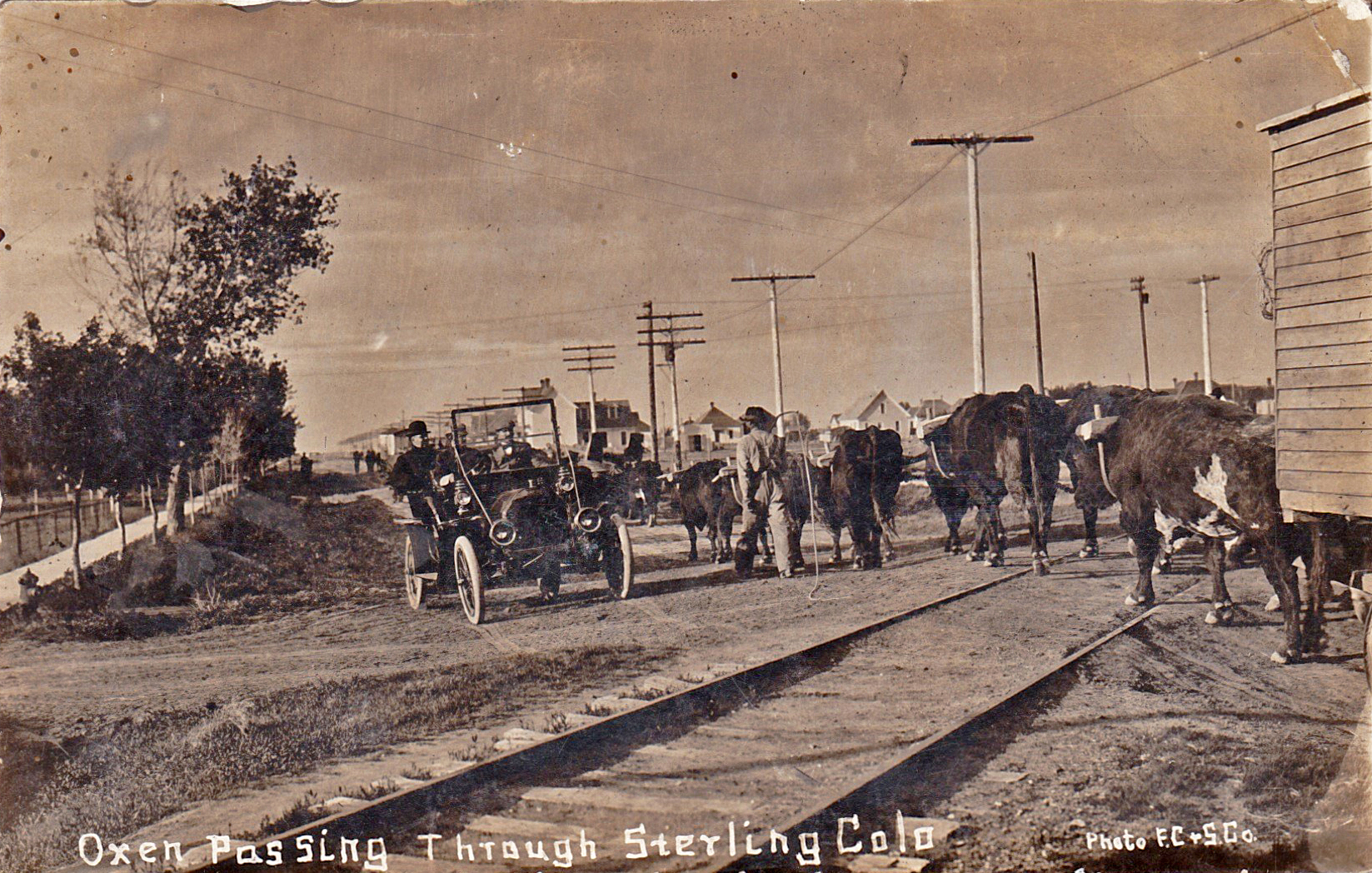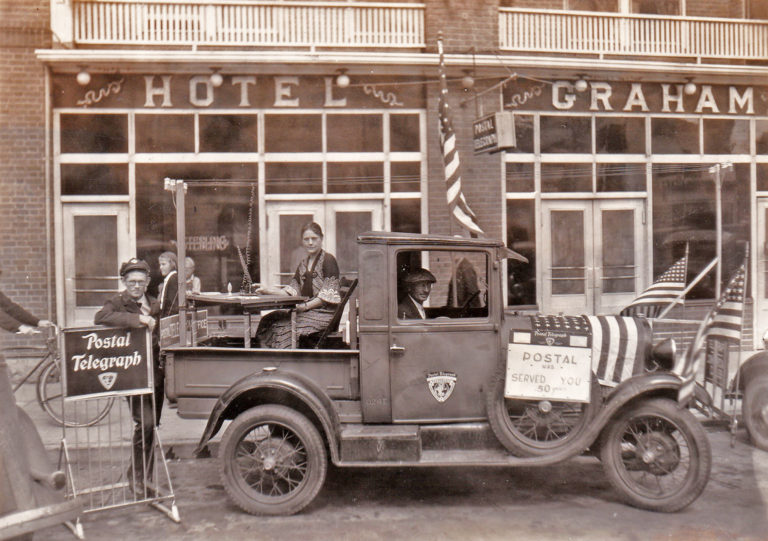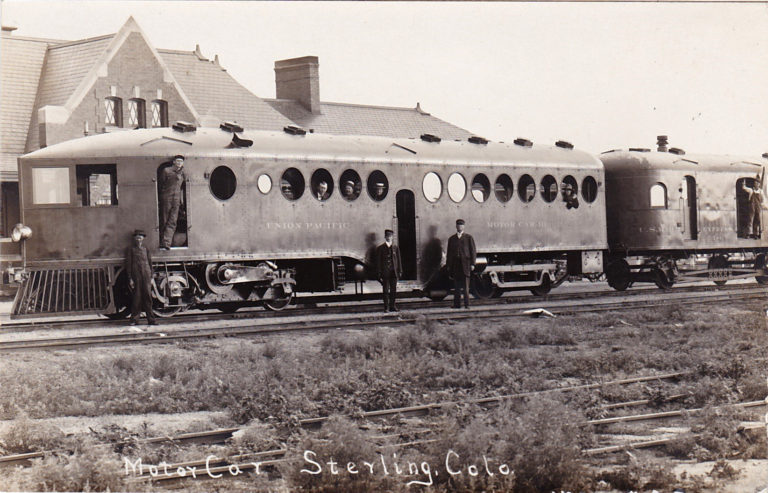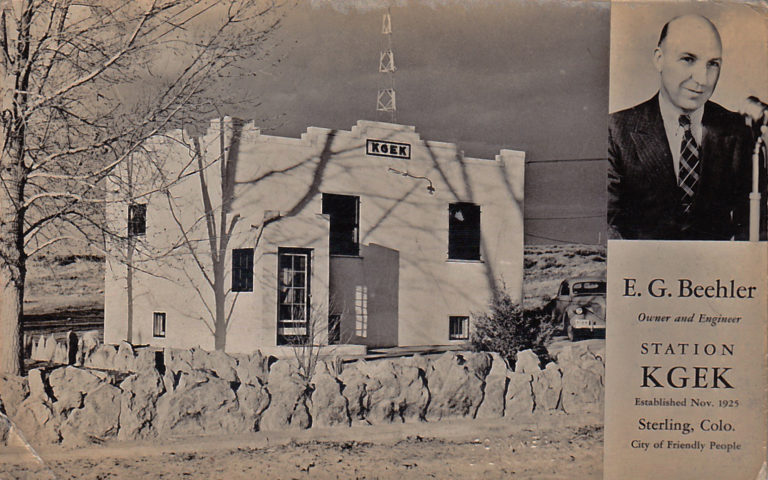Oxen are bovines trained as draft animals. They are most commonly castrated adult males, although bulls and cows may be used as well. They can pull heavier loads for a longer period than horses, but they don’t move as fast.
Note the man walking away from the camera with a bullwhip. Bullwhips are used to control animals through the use of sound — the crack of a bullwhip is the small sonic boom made when a part of the whip breaks the sound barrier. It was long thought that the tip of the whip was what broke the sound barrier, but a May 2002 article in Scientific American contends that it’s a loop in the whip that does so. Here’s a YouTube clip of champion whip-cracker Adam Winrich: https://www.youtube.com/watch?v=aHlFYHticq4 .
The oxen pictured appear to be pulling something akin to a box car with siding, but it’s hard to know what it is without seeing more of it. Note the attached coil of rope.
Sterling is the seat of Logan County. At the time this photo was taken, Sterling had about 3,000 residents. Ten years later the population had doubled.
“Don,” the author of this card, postmarked October 20, 1911, is writing to Miss Lorena Bales in Huntingdon, Pennsylvania. They may have hit a rough spot, for Don writes, “Will write you a letter soon and explain. I suppose I will get a calling down.”
REFERENCES:
- “Ox,” Wikipedia.org at https://en.wikipedia.org/wiki/Ox
- “Sterling, Colorado,” Wikipedia.org at https://en.wikipedia.org/wiki/Sterling,_Colorado
- “True Cause of Whip’s Crack,” by Sarah Graham, Scientific American dated May 28, 2002, at https://www.scientificamerican.com/article/true-cause-of-whips-crack
- “Whip,” at Wikipedia.org at https://en.wikipedia.org/wiki/Whip




